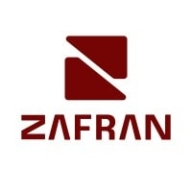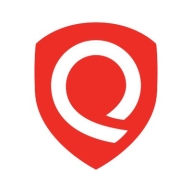


IBM Guardium Vulnerability Assessment and Qualys CyberSecurity Asset Management are competitive products in cybersecurity. Qualys appears to have the upper hand due to its superior features and perceived pricing value.
Features: IBM Guardium focuses on comprehensive data protection, offering robust compliance capabilities, ensuring sensitive data integrity and security. Qualys provides powerful asset discovery, threat detection, and asset management features. The primary distinction lies in Guardium’s dedication to data security while Qualys emphasizes asset management breadth.
Ease of Deployment and Customer Service: IBM Guardium is noted for straightforward deployment and strong customer support, increasing user satisfaction. Qualys presents a cloud-based deployment, which is often more efficient, highlighting IBM's traditional on-premise options against Qualys’s modern cloud approach.
Pricing and ROI: IBM Guardium generally involves higher initial setup costs; however, the ROI is viewed positively due to its extensive data protection capabilities. Qualys offers a more economical pricing model with a favorable ROI related to its asset management strengths. IBM’s costs may deter some, but its ROI through robust data protection is significant, whereas Qualys is preferred for better cost efficiency.


Zafran Security integrates with existing security tools to identify and mitigate vulnerabilities effectively, proving that most critical vulnerabilities are not exploitable, optimizing threat management.
Zafran Security introduces an innovative operating model for managing security threats and vulnerabilities. By leveraging the threat exposure management platform, it pinpoints and prioritizes exploitable vulnerabilities, reducing risk through immediate remediation. This platform enhances your hybrid cloud security by normalizing vulnerability signals and integrating specific IT context data, such as CVE runtime presence and internet asset reachability, into its analysis. No longer reliant on patch windows, Zafran Security allows you to manage risks actively.
What are the key features of Zafran Security?
What benefits can users expect from Zafran Security?
In industries where security is paramount, such as finance and healthcare, Zafran Security provides invaluable protection by ensuring that only exploitable vulnerabilities are addressed. It allows entities to maintain robust security measures while allocating resources efficiently, fitting seamlessly into existing security strategies.
IBM Guardium Vulnerability Assessment scans data infrastructures (databases, data warehouses and big data environments) to detect vulnerabilities, and suggests remedial actions. The solution identifies exposures such as missing patches, weak passwords, unauthorized changes and misconfigured privileges.
Qualys CyberSecurity Asset Management provides advanced real-time asset visibility, dynamic tagging, and External Attack Surface Management. It streamlines asset discovery and management using cloud agents and IP-based scanning, enhancing risk management and software lifecycle tracking.
Qualys CyberSecurity Asset Management offers a comprehensive solution for managing asset inventories and tracking software lifecycle states. It facilitates network visibility and supports zero-day vulnerability solutions, enhancing security posture through efficient monitoring. Users benefit from its cloud-based interface, which provides in-depth asset configurations and insights. Key features include automated vulnerability scanning and unauthorized software management, reducing manual efforts. The platform also emphasizes the importance of timely remediation and ongoing risk mitigation across multiple environments. Despite its strengths, users note the need for enhanced integration with additional CMDBs beyond ServiceNow, as well as cost efficiency improvements. Requests also include better report customization, more scan control, and a simplified UI.
What are the key features of Qualys CyberSecurity Asset Management?In industries like finance, healthcare, and manufacturing, Qualys CyberSecurity Asset Management enhances asset control by offering visibility into hardware and software configurations. It aids in maintaining security compliance and identifying unauthorized software, crucial for sectors with strict regulatory requirements.
We monitor all Vulnerability Management reviews to prevent fraudulent reviews and keep review quality high. We do not post reviews by company employees or direct competitors. We validate each review for authenticity via cross-reference with LinkedIn, and personal follow-up with the reviewer when necessary.